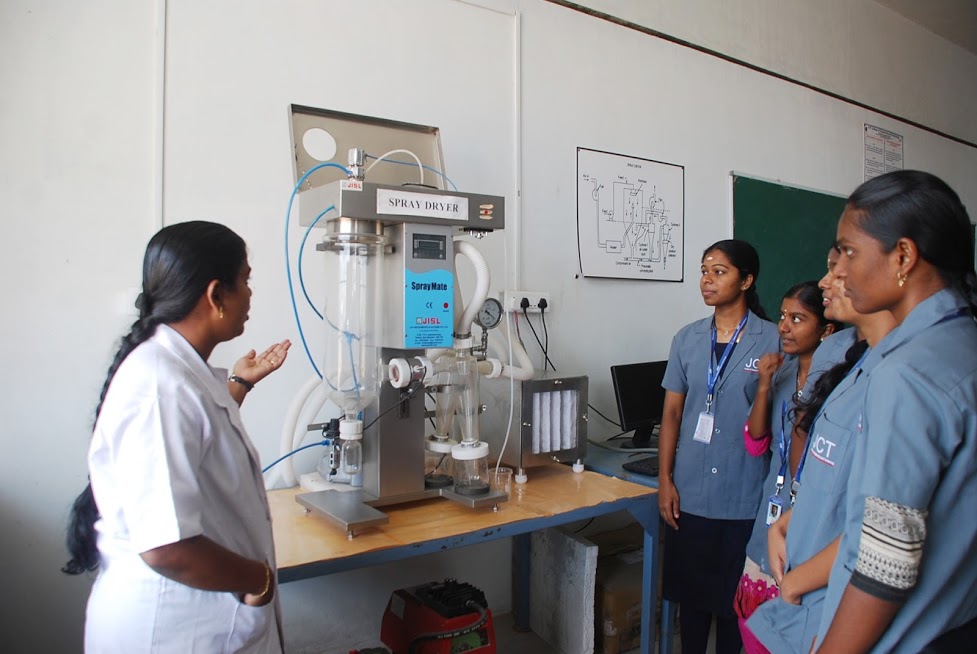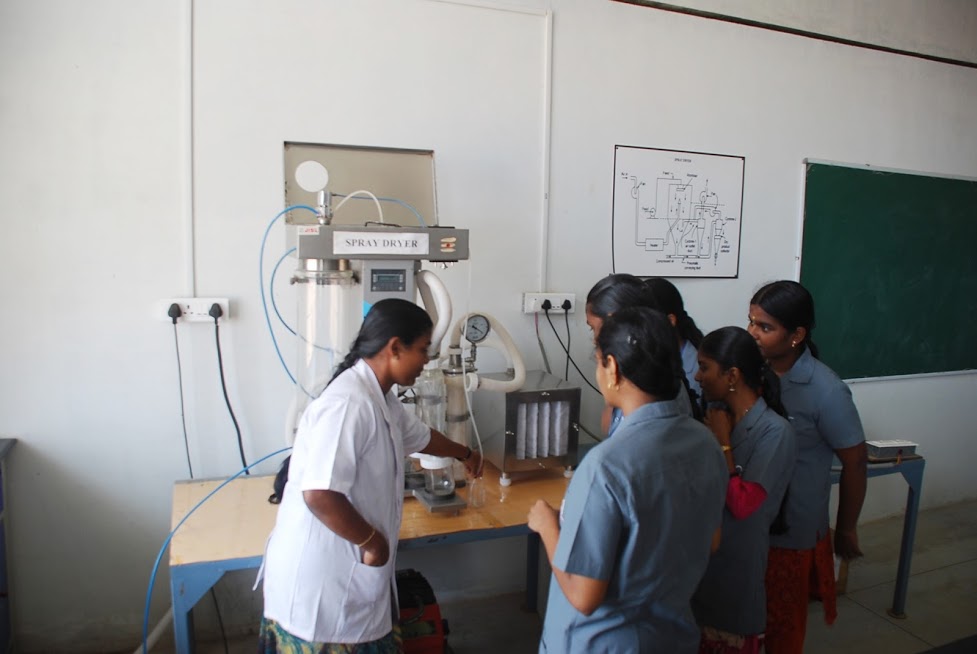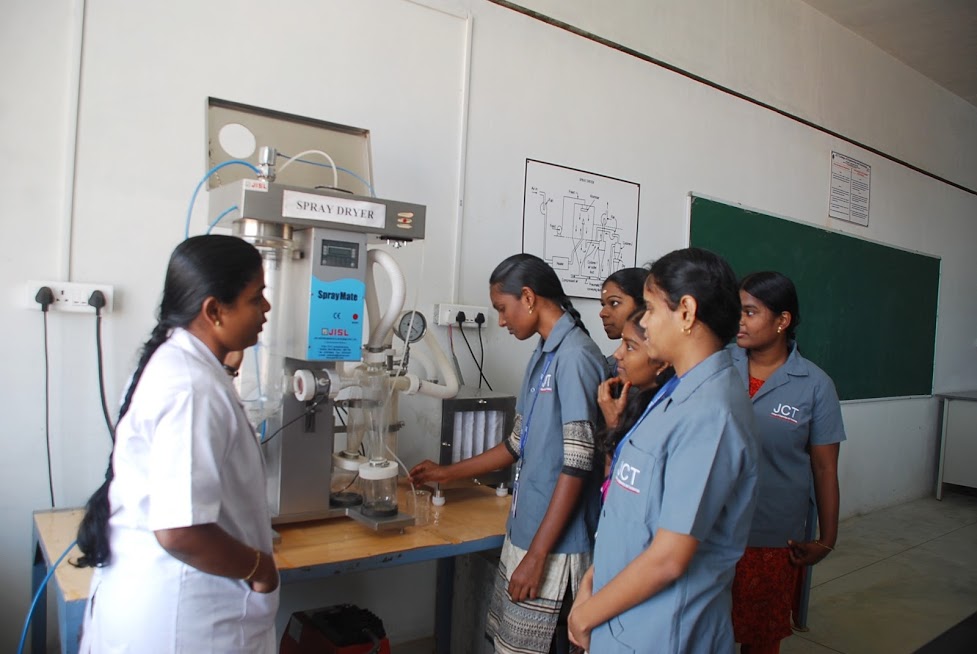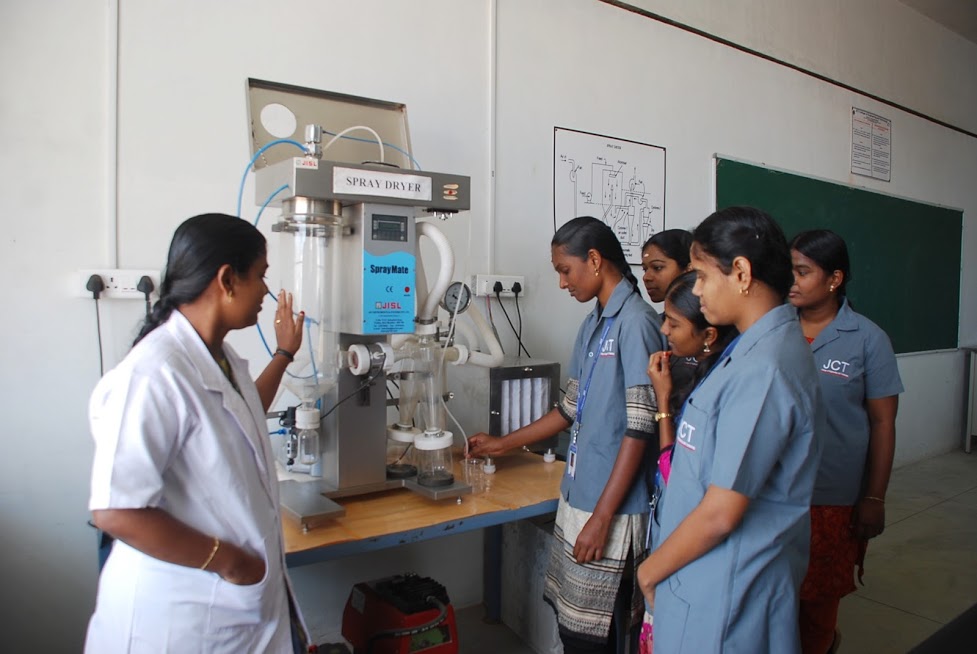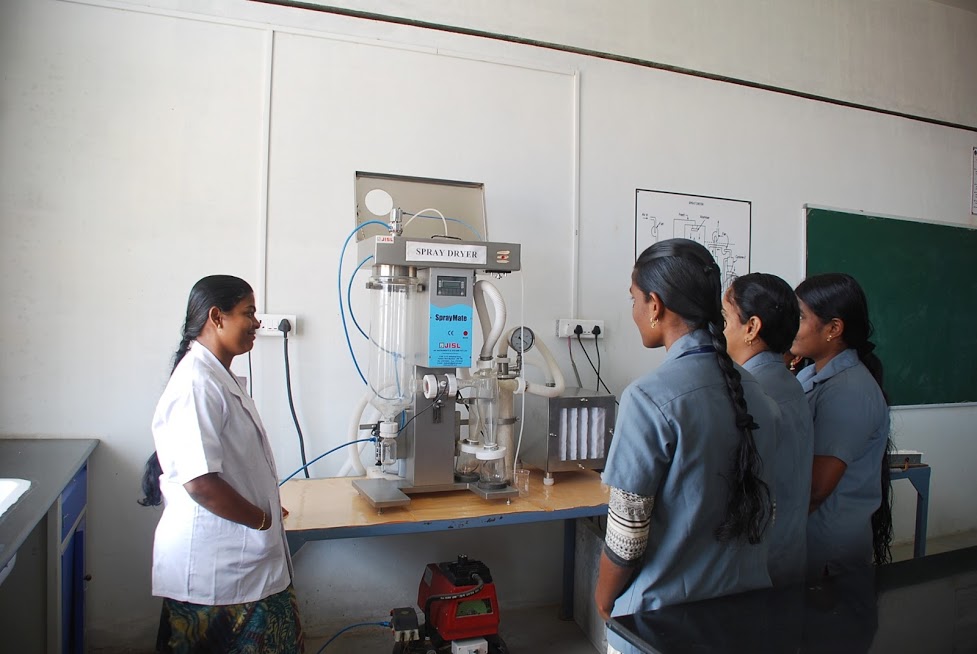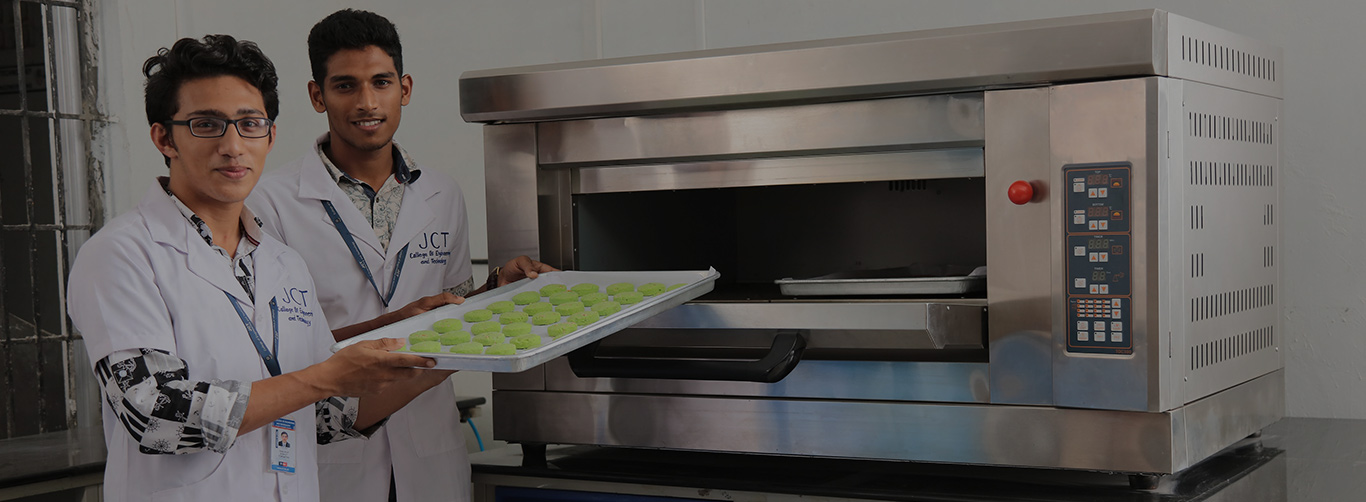
Academic Research – Food Tech
Explore Admission- Home
- Research
- Academic Research
- Academic Research – Food Tech
Academic Research – Food Tech
List of MoU
| S.No | MoU Details |
|---|---|
| 1. | Benchmark Tea Factory, Ooty |
| 2. | Meenalakshmi Farm Products, Dindigul |
| 3. | Awecare Analytical & Research Laboratories, Erode. |
Spray Dryer
Spray drying is a technique widely used in the food industry to produce food powder due to its effectiveness under the optimum condition. Spray drying is an industrial process for dehydration of a liquid feed containing dissolved and/or dispersed solids, by transforming that liquid into a spray of small droplets and exposing these droplets to a flow of hot air. The spray drying parameters such as drying air temperature and feed rate are influential to the attributes of spray-dried food such as particle size, bulk density, moisture content, average time of wet ability and insoluble solids.
It takes a liquid stream and separates the solute or suspension as a solid and the solvent into a vapour. The solid is usually collected in a drum or cyclone. The liquid input stream is sprayed through a nozzle into a hot vapour stream and vaporized. Solids form as moisture quickly leaves the droplets. A nozzle is usually used to make the droplets as small as possible, maximizing heat transfer and the rate of water vaporization. Droplet sizes can range from 20 to 180 μm depending on the nozzle. There are two main types of nozzles: high pressure single fluid nozzle and two-fluid nozzles: one fluid is the liquid to dry and the second is compressed gas.
Spray dryers can dry a product very quickly compared to other methods of drying. They also turn a solution or slurry into a dried powder in a single step, which can be advantageous as it simplifies the process and improves productivity margins.
Spray drying is employed to manufacture Amorphous Solid Dispensation, by uniformly disperse food Ingredients into a polymer matrix powder format it’s often used as an encapsulation technique by the food and other industries. A substance to be encapsulated (the load) and an amphipathic carrier (usually some sort of modified starch) are homogenized as a suspension in water (the slurry). The slurry is then fed into a spray drier, usually a tower heated to temperatures well over the boiling point of water.
I am text block. Click edit button to change this text. Lorem ipsum dolor sit amet, consectetur adipiscing elit. Ut elit tellus, luctus nec ullamcorper mattis, pulvinar dapibus leo.

